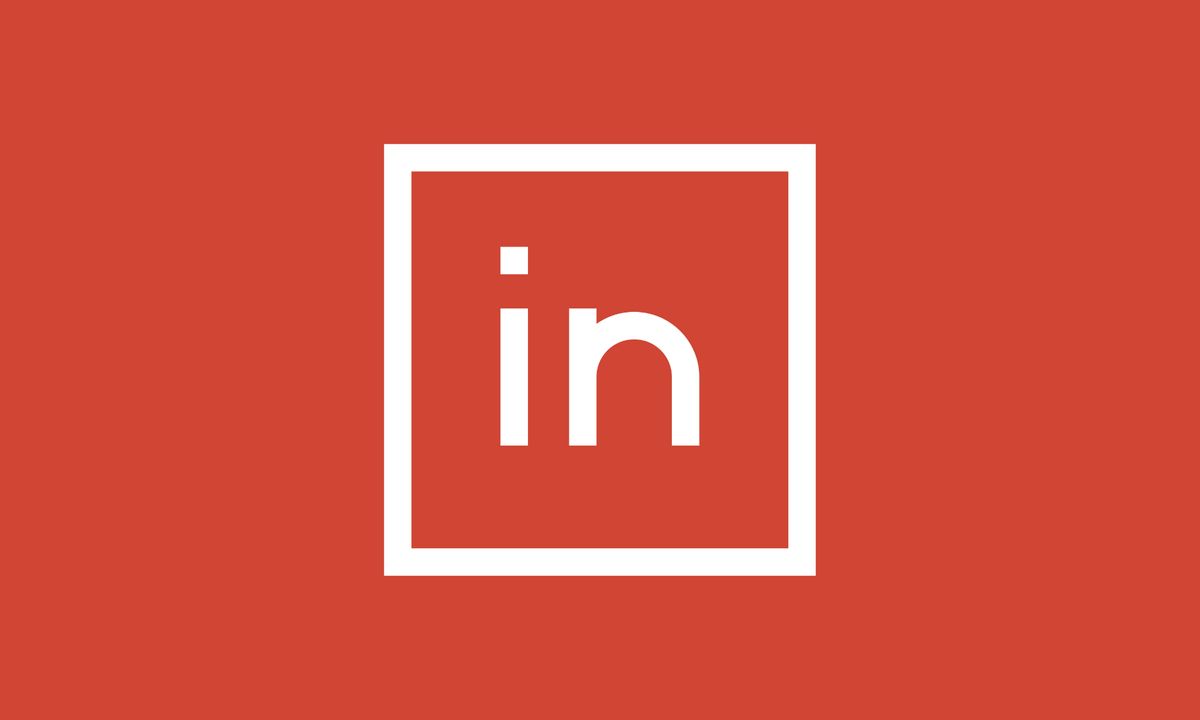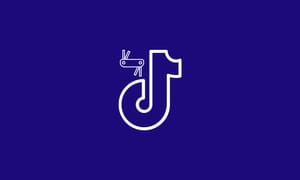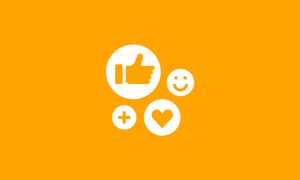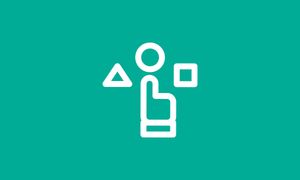There are more than 300 million users and 3 million business pages on LinkedIn, but that's not what makes LinkedIn vital for B2B marketing. It's the blistering click-through rate.
LinkedIn is the origin of a jaw-dropping 64% of total traffic coming to a select bunch of corporate websites from social media. If that doesn't impress you, here's the stunner. Hubspot found that LinkedIn converted more leads than Facebook and Twitter combined. This could well be the reason why all of the top 50% of American law firms have LinkedIn business pages, and 88% of all B2B marketers use LinkedIn for marketing.
The Big Loss
Most businesses target Facebook and Twitter as their primary channels, keeping LinkedIn as the third priority. A lot of the time, these businesses can barely maintain an effective presence on just one or two channels so LinkedIn gets ignored, which is such a loss, as the channel can prove much more effective for B2B marketing. With the following tips and a smart digital marketing strategy, you can jumpstart your LinkedIn marketing and start seeing results within days. You just have to dedicate 15 minutes to LinkedIn daily.
#1. Know Your Audience and the Channel
Each social media website has its own strengths and these, in turn, mean different social behaviours. For instance, 68% of Facebook users log in to see what friends and family are up to. By contrast, the predominant majority of LinkedIn users signs in for professional reasons, which means they may not want to see a video of your cats (unless it's cat-food that you are selling, and they happen to be looking for it).
The average time a user spends on LinkedIn is much less than the average time spent on Facebook or Twitter. In other words, LinkedIn users log in with specific objectives in mind. They may be looking to find a job or an employee, keep tabs on their professional connections, make new business acquaintances, or become active in communities that align with their professional interests.
For a B2B marketer, it means two things. Your updates should be carefully thought out, and your targeting should be precise. The content should be focused on your business and industry but should talk about them from your customers' point of view. The content quality should be top-notch. Substandard photos and videos have no place on LinkedIn. Avoid posting poor memes or unprofessional content.
Thankfully, LinkedIn has a very effective search feature, which makes finding and targeting people and companies a simple task. You can look for people, groups, universities, and companies to target by location, company name and size, industry, seniority level, and many other search attributes. However, many of the search features require you to upgrade. You can consider upgrading when you get your head around the free version of LinkedIn.
#2. Dress to Impress
Your LinkedIn company page should be impressive. LinkedIn users can spot low quality from miles and wouldn’t engage with you if they doubt the quality of your services. Here are a few things that you can do to enhance your company page.
Design a Good Cover Photo: Make sure that you display a professional-looking cover image that depicts your business. Inserting your company logo in your cover image and using your brand colours makes your page look more professional. Take a look at the Fast Company and Hubspot cover images below for inspiration.
Use Showcase Pages: LinkedIn business pages used to support product and services pages and media-rich content. They don’t anymore. However, you can create Showcase Pages to feature your special offers, launches, or other important aspects of your business. Showcase Pages include a bigger hero image and a two-column feed design. You can create up to 10 Showcase pages, but each of them will have its own followers and can be connected to only one company page. The followers of your company page cannot be carried over to your Showcase Pages. Check out the following Showcase Page by HP. It is one out of 10 Showcase pages that HP maintains.
Optimise Overview: In the Overview section, clearly describe your business and products as well as whom your business serves. List down your key specialities and sprinkle the profile with keywords that people may use as search terms when they are looking for a business like yours.
#3. Spark Engagement
Like other social media channels, content reigns supreme on LinkedIn too. You should give your audience a reason to engage with your post. Does it correspond to their needs? Is it entertaining? Is it crisp and well presented?
Pictures and headlines are the two major attention grabbers on LinkedIn, as users will only notice these when glancing through their newsfeed, especially if they are using a mobile device or tablet. Draft catchy headlines that compel your audience to engage with your posts. Here are a few tips to help you write great headlines:
- Use numbers in your headlines—e.g. Exploiting LinkedIn for Marketing in 5 Easy Steps
- Use interesting words—e.g. Exploiting
- Use unique analogies or logic—e.g. B2B Goldmine
- Ask a question (if you are not using a number)—e.g. why…? how…? would you…?
- Use online resources for improving the appeal of your headlines
- Track and report. Keep a detailed report of all headlines and KPIs like CTR. Over time you’ll be able to see what works the best for your industry.
You should include a picture or video with your updates and keep the text to a minimum, without compromising on the clarity of your message. Create your content as bite-size chunks of useful information.
Before you can select what to post as updates, you'll need to know your audience and their needs. Your updates must resonate with your audience in order to trigger engagement. Use current events or trending topics to make your updates more interesting. Don’t talk about your services all the time. Instead, post about general topics that interest your readers. Check out the following updates from two of the most followed LinkedIn company pages.
LinkedIn also allows you to target your updates. When posting, you can select which particular connections or groups you want to share that update with. Using this feature, you can target people from a particular profession, seniority, geographical area, and more.
#4. Leverage Groups
One of the most valuable features of LinkedIn is Groups. LinkedIn Groups are similar to Facebook groups, but the former are more focused and meaningful. They provide a place for professionals from the same industry to share their content and ideas, network with peers and influencers, and establish themselves as credible voices in their industry. There are several ways to leverage LinkedIn Groups for business.
- Target the groups that have your prospects and customers as members. It may take you some time to find the groups that work best for you. You can join a few groups, see what's going on there, and replace the ones that offer little value. With nearly 2 million Groups on LinkedIn, you'll never run short of choices.
- Post content occasionally and comment on what others are sharing as often as you can. Don’t post too often and always reply to people's questions. According to LinkedIn stats, you can have up to 4 times higher company pageviews if you comment on posts in different groups.
- Create great content for sharing with other professionals in your targeted Groups. You can develop ebooks, guides, how-to videos, or blog-posts for sharing in different Groups.
- Answer questions and speak on hot industry topics to establish yourself as an expert and engage other Group members.
If you are struggling to find Groups in your industry or area you can always start your own Group(s). Build them around different niches or needs in your industry. For instance, a travel agency can start several groups around vacation hotspots. Users who have been to those places or are interested in going can join such groups. Creating a successful group can do wonders for your company's image and, if done correctly, sales.
#5. Build a Campaign
Without publicity, a terrible thing happens. Nothing! If you want to avoid the frustration of watching your LinkedIn followers grow at a snail's pace, you should consider LinkedIn advertising. With that said, I always advise my clients never to go for advertising before they have refined their content and targeting strategies. After you know where your audience is and what kind of content it best responds to, advertising can always take your marketing efforts to a new level.
More than 80% of LinkedIn users say they like to engage with companies on LinkedIn. Advertising helps you reach a larger number of targeted prospects. Considering the phenomenal conversion rates that LinkedIn boasts, LinkedIn advertising can deliver the loudest bang for your buck.
LinkedIn offers you two basic option for advertising—Ads and Sponsored Content.
LinkedIn Ads: Creating an Ad is really simple; however, it's what your Ad will contain that demands your attention. Slick images, spanking headlines, and solid descriptions can multiply the effects of your advertising campaign. LinkedIn Ads are shown in the right side pane.
Sponsored Content: Sponsored Content is basically an update that you promote to your targeted audience. It may be the latest achievement by your company or some helpful information that you want to share with a targeted group of individuals and/or businesses. You can sponsor your most engaging updates to multiply their reach and engagement. Sponsored Content also helps you cement your reputation in your industry by posting informative updates and targeting them to the right audience. For example, if you are a stockbroker, you can sponsor and update about the hottest stocks to buy or stock buying tips. Again, keep track of them and dont be afraid to shout from the roof tops when you’re doing well.
LinkedIn's advertising platform gives you elaborate targeting options, which you should fully exploit while finalising your campaign. In addition to the demographic and interest targeting that Facebook and other social platforms offer, LinkedIn allows you to target people by you can target people by job title, employer, industry, and even skills/ interests. You can also create multiple variation of your Ad and link them to different URLs or LinkedIn pages.
So, now that you know how effective LinkedIn can be, do you plan to start using it for your B2B marketing? Did you find this post helpful? Let me know in your comments and don’t forget to share this article with your colleagues, clients or anybody you feel could benefit.






